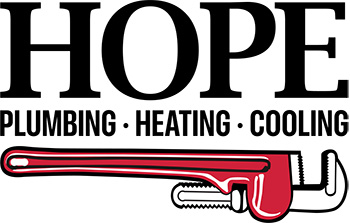Saving money on plumbing takes two forms. One saves money on bills by conserving water, and the other avoids having to pay for repairs and replacements by keeping your plumbing in good shape. While caring for plumbing will occasionally require some help from plumbers, you can reduce the bills by changing how you use the plumbing in your home.
1. Keep Your Drains Clean
If you really want to save money on plumbing repairs, one of the best things you can do is to keep your drains clear. That means being careful what you put down them and having them occasionally cleaned by a professional plumber.
Biofilm, or microbial slime, naturally builds up inside drains and pipes over time. Even if you do your best to keep the drains clean, they can still have buildup that you need to clean every few years. You can trust our reliable drain cleaning service for your sink, tub, toilet drains, and the main sewer line. The cost of the cleaning will be much less over the years compared to the potential cost of having to call a plumber to unclog those same drains. Plus, biofilm can potentially have harmful effects on your family’s health.
In terms of prevention, watch what you put down the drain. Wipe grease, fats, and oils from dishes and pans before washing anything. Even a tiny bit of these can eventually form a greasy clog in your drains. Anything with fat in it is suspect. Even the extra peanut butter on that spoon in your sink can be problematic. Wipe it off with a paper towel and toss the towel in the trash instead of trying to wash the peanut butter down the sink drain.
Also, use hair catchers in your bathroom sinks and tubs/showers, and put drain nets in your kitchen sink. Those will catch larger bits of food and hair, keeping them from flowing into the pipes where they can ball up and form clogs. Once a week, run some boiling water down the drains to help break up any greasy junk that may be starting to build up in the pipes.
2. Replace Older Fixtures
There’s much to be said about the efficiency of newer fixtures over older ones. Aerators that allow for super-low gallon-per-minute flows and still offer great water pressure have been a blessing. They save water and lower bills year after year. Low-flush toilets have improved tremendously over older versions that may have seemed rather weak. The newer ones flush very well while drastically reducing water use per flush. And that water savings really does show up on your bills.
If your home has older plumbing and fixtures, we can replace them with newer, more efficient versions. And if the fixtures you have aren’t that old but aren’t that new, either, have us look at the aerators used in your current sink faucets. There may be a more efficient aerator available.
3. Take advantage of any Government Rebates
Many utility companies and government programs offer attractive rebates for those opting for energy-efficient upgrades. Hybrid heat pumps and tankless water heaters, recognized for their eco-friendly and cost-effective features, often qualify for these rebates. Take advantage of available incentives by choosing these advanced systems, not only enjoying immediate savings on installation but also benefiting from long-term energy efficiency. Check with your local utility providers and government programs to learn about the rebates applicable to your area and make a smart investment that pays off both
4. Double-Check Your Water Heater’s Temperature
Your water heater keeps water above a certain temperature to prevent the growth of the Legionella bacteria, which can cause Legionnaires’ disease. However, that doesn’t mean you have to keep it at the highest temperature possible.
Set the water heater temperature to at least 120 degrees Fahrenheit, and install anti-scald devices for fixtures like showers and sink faucets. Keeping the water heater at a higher temperature can be safer in terms of killing more bacteria, but that will also increase your utility bills. Not to mention, if you don’t have anti-scald devices on your plumbing fixtures, then anyone turning on the hot water is at risk of being burned.
5. Reconsider Your Toilet Paper Brand
Did you know your toilet paper could slowly clog up your home’s plumbing and main sewer line? If that goes on for too long, you could face a difficult plumbing job requiring a professional’s help. It’s better to prevent the clog in the first place and not have to spend money on the repair.
This problem is common in homes where pipes aren’t fully clean and material has been building up on the insides of the pipes for a while. The material doesn’t form a clog or slow anything down. Still, when additional material flows down the pipe, some can catch on the buildup, contributing a little more bulk to the forming clog. Technically, the toilet paper that flows down the pipe should be in the process of dissolving and, thus, not stick to the buildup. However, that’s not always what happens.
Toilet paper is made to dissolve in water, but some brands dissolve more easily than others. The brands that dissolve quickly generally disintegrate too fast for them to block the flow of anything down a pipe. But the brands that dissolve more slowly could still be relatively undissolved by the time the paper hits the area where gunk is building up. That can lead to a full clog, especially if a lot of toilet paper is flushed down at once. If the clog is inside the toilet’s siphon tube, many times, just waiting for the water to dissolve the rest of the paper will work.
But if the clog is down, say, in the main sewer line, you might need rooter services to break it up. If these problems go untreated for long periods, they could damage the sewer lines. In that case, you can use our sewer replacement or repair services. We are available for emergencies.
One of the easiest ways to prevent this type of clog is to look at the toilet paper you use. Thicker, stronger paper tends to dissolve more slowly, while thinner paper dissolves quickly. Remember that buildup starts to re-occur over time, even if you have your home’s plumbing lines professionally cleaned.
Contact us at Hope Plumbing, Heating and Cooling in Indianapolis, IN if you have a plumbing problem needing repair or want help cleaning drains or replacing fixtures. We are especially experienced in working with older homes. You can also call us for help with your sump pump or water heater. Ensure the plumbing serving your home functions well and conserves water. Don’t let leaks and old plumbing ruin your day or your household budget.


